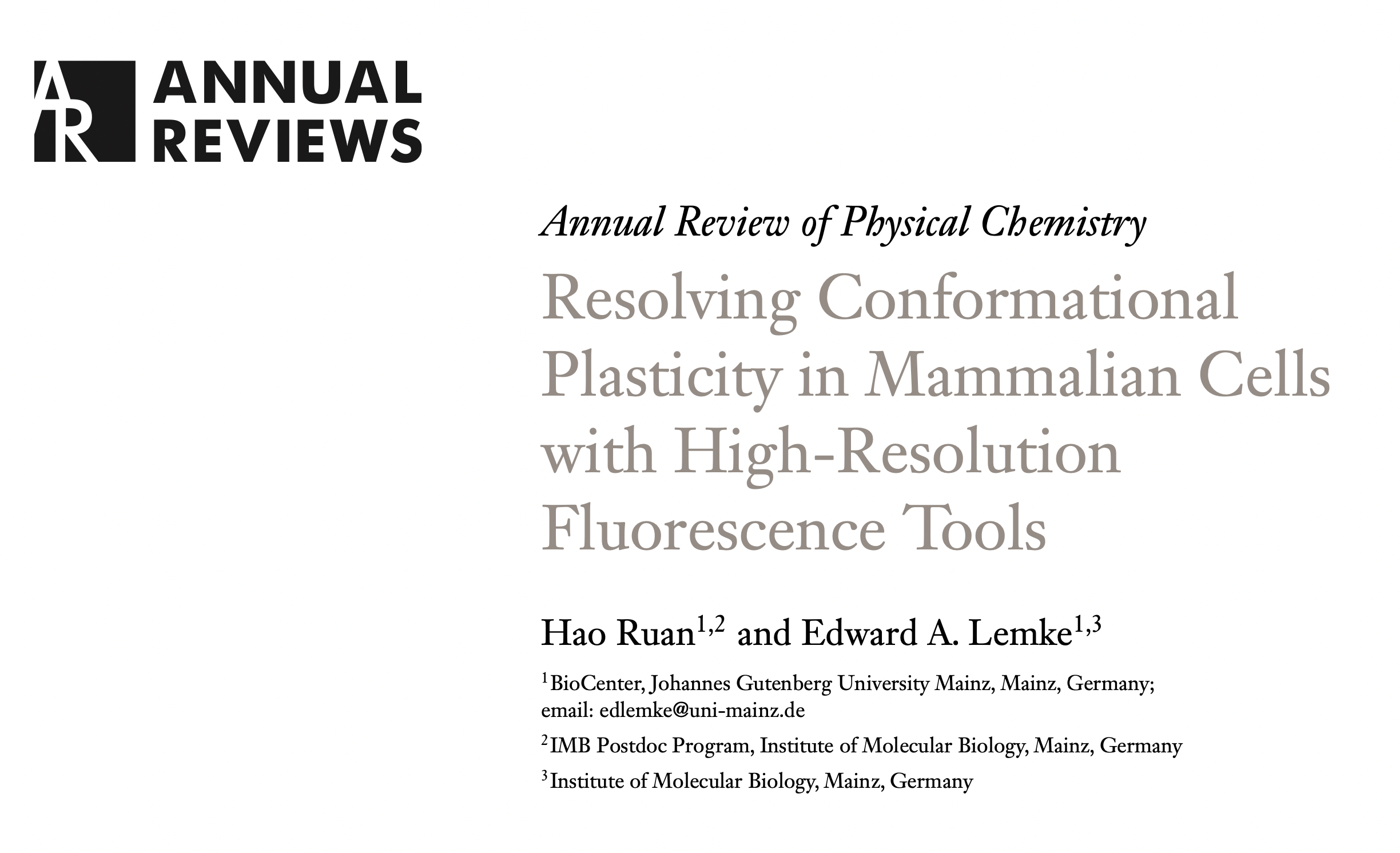Congratulations to Hao Ruan and Edward Lemke from SFB1551 on their latest review, “Resolving Conformational Plasticity in Mammalian Cells with High-Resolution Fluorescence Tools,” published in the Annual Review of Physical Chemistry!
Investigating protein dynamic structural changes is fundamental for understanding protein function, drug discovery, and disease mechanisms. Traditional studies of protein dynamics often rely on investigations of purified systems, which fail to capture the complexity of the cellular environment. The intracellular milieu imposes distinct physicochemical constraints that affect macromolecular interactions and dynamics in ways not easily replicated in isolated experimental setups. We discuss the use of fluorescence resonance energy transfer, fluorescence anisotropy, and minimal photon flux imaging technologies to address these challenges and directly investigate protein conformational dynamics in mammalian cells. Key findings from the application of these techniques demonstrate their potential to reveal intricate details of protein conformational plasticity. By overcoming the limitations of traditional in vitro methods, these approaches offer a more accurate and comprehensive understanding of protein function and behavior within the complex environment of mammalian cells.
This insightful piece showcases cutting-edge fluorescence techniques—like FRET, fluorescence anisotropy, and minimal photon flux imaging—that allow researchers to visualize protein conformational changes in real-time within living mammalian cells. These high-resolution approaches are transforming our understanding of protein dynamics, opening new doors for disease research and drug development.
A great step forward in cellular biophysics!

